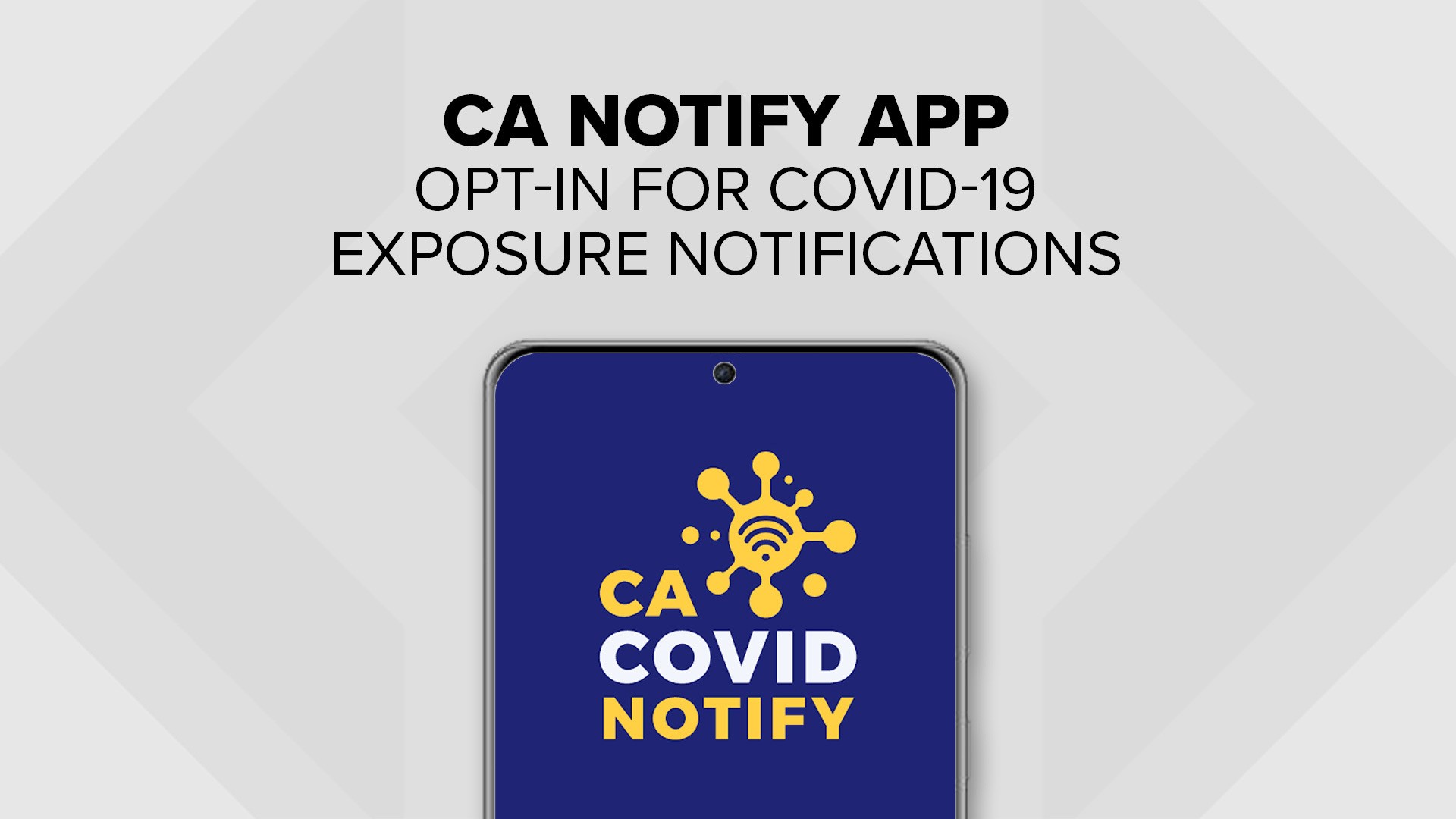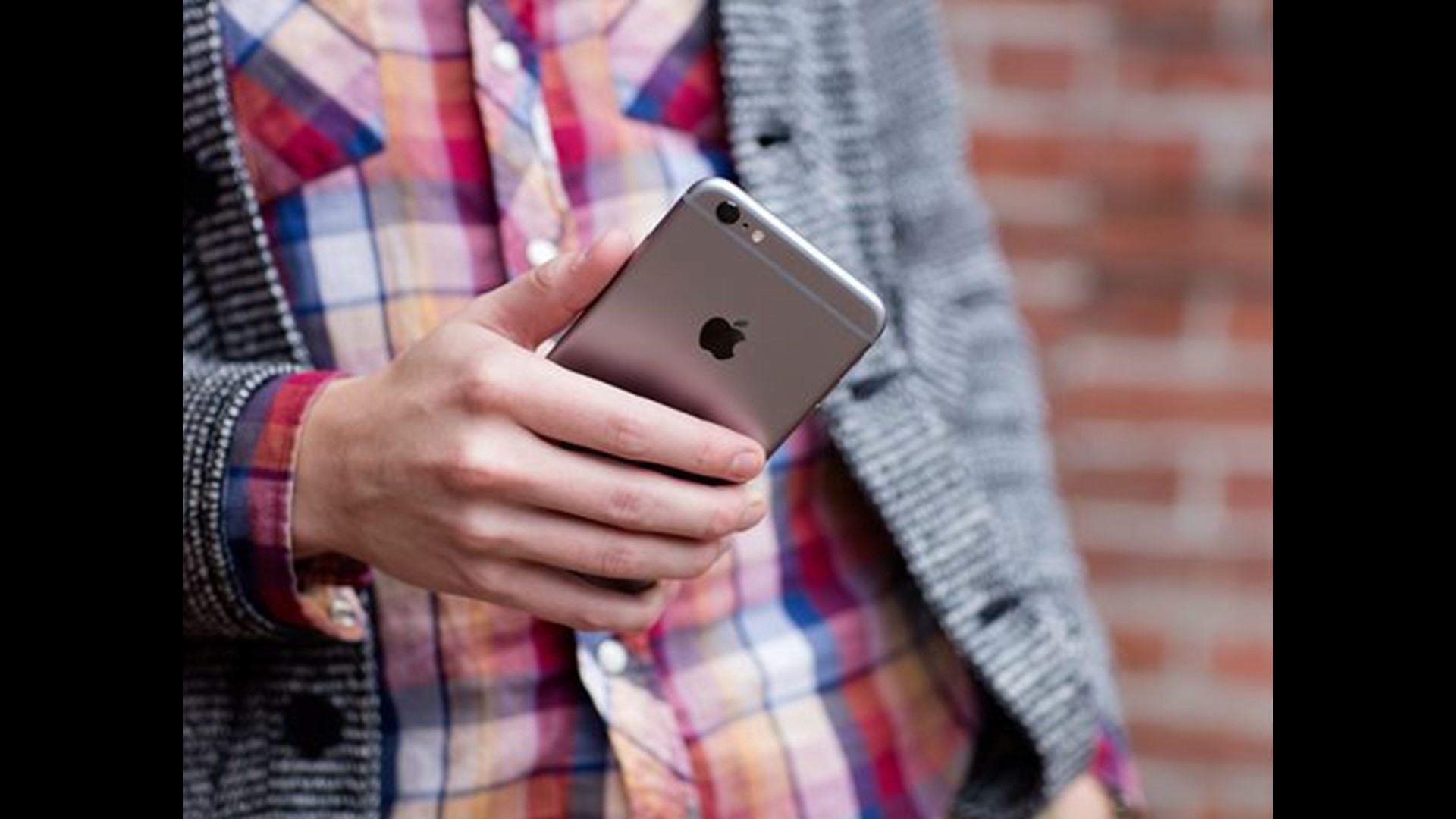SAN DIEGO COUNTY, Calif. — Following the announcement by Governor Gavin Newsom to expand CA Notify statewide, the California Department of Health (CDPH) and the California Department of Technology (CDT) Thursday launched the digital tool designed to notify Californians of their possible exposure to COVID-19. The free, mobile technology is now available to all Californians and can be accessed on mobile devices.
The governor stressed that this app was created to provide exposure notifications, it is not a contact tracing app. The state, Google and Apple joined together and have been working to create the app and started a pilot program over the last couple of months.
The CA Notify app is an opt-in app and users can select to receive notifications. Newsom said during Monday's press conference that the app is free, 100% private and secure, 100% opt-in and does not track your location.
The CA Notify app is available on both Apple and Android platforms.
How the CA Notify app works:
- When individuals voluntarily activate CA Notify, the tool uses Bluetooth technology to exchange random codes between phones without revealing the user’s identity or location.
- If a CA Notify user tests positive for COVID-19, they will receive a verification code to plug into the app, if they choose.
- Any other CA Notify users who have been within 6 feet for 15 minutes or more of the COVID-19 positive individual will get an anonymous notification of possible exposure.
- CA Notify will accelerate how quickly people get notified of a possible COVID-19 exposure, giving people the information they need to make responsible decisions around quarantine and testing.
- Users who have tested positive for COVID-19 will get a text from the California Department of Public Health at 855-976-8462 with a code which they can enter into CA Notify triggering an alert to phones of people who may have been exposed in the previous 14 days.
How to use on your phone
iPhone
CA Notify will be available on iOS 13.7 or later. Pilot users must update their iOS to 14.2 or later.
iPhone users can enable CA Notify in their device’s settings:
- Go into settings
- Scroll down to Exposure Notifications *tip: it should be in the same section below General
- Turn on Exposure Notifications
- Select United States > California
Android
CA Notify is now available to download in the Google Play Store. Once it is downloaded, you can set your preferences.
Governor Newsom explains CA Notify and how to get it on your smartphone:
“Throughout this pandemic we have tapped California’s talent pool to fight this virus and that includes working with tech innovators like Apple and Google,” said Governor Newsom. “CA Notify will help slow the spread by alerting those who opt in to receive an alert if they’ve come into contact with someone who has tested positive. The process is private, anonymous and secure, and is one of the many tools in the state’s data-driven approach to help reduce the spread.”
The state launched a pilot in September for students, staff, and faculty at UC San Diego and UC San Francisco and expanded it to include five other UC campuses in mid-November. The privacy-first focus of CA Notify does not allow the state to know how many people opted into the system, but the UC system estimates more than 250,000 individuals are utilizing the technology as part of the pilot.
CA Notify has helped identify exposed individuals early, allowing them to quickly quarantine and reduce virus transmission. The CA Notify pilot has been successfully evaluated, and similar programs have been launched in other states.
“Our pilot experience starting at UC San Diego and expanding to other UC campuses showed this technology was effective in identifying exposed individuals early for quarantine and testing, and helping keep our communities as safe as possible,” said Christopher Longhurst, MD, chief information officer of UC San Diego Health. “This free and reliable smartphone technology can help all Californians. As we enter a new, and hopefully final, surge in the pandemic, now more than ever is the time to put every possible tool to use to slow the spread of the virus.”
A state-mandated "regional stay-at-home" order went into effect at 11:59 p.m. Sunday, triggered when intensive-care unit bed availability remained below 15% after Saturday's daily update, according to the California Department of Public Health.
San Diego County Supervisor Nathan Fletcher joined News 8 Monday and said county residents are facing a tough situation.
"But COVID-19 is a tough virus," Fletcher said. "This is the toughest fight we've had to face during the pandemic. But hope is on the horizon with a vaccination, but it's not here now."
San Diego County Supervisor Jim Desmond also joined News 8 Monday and said people are frustrated and said they are saying “they did everything they were told to do and yet are still being punished.”
Under the order, the following businesses/recreational facilities will be forced to close:
-- indoor and outdoor playgrounds;
-- indoor recreational facilities;
-- hair salons and barbershops;
-- personal care services;
-- museums, zoos, and aquariums;
-- movie theaters;
-- wineries;
-- bars, breweries and distilleries;
-- family entertainment centers;
-- cardrooms and satellite wagering;
-- limited services;
-- live audience sports; and
-- amusement parks.
Schools with waivers will be allowed to remain open, along with "critical infrastructure" and retail stores, which will be limited to 20% of capacity. Restaurants will be restricted to takeout and delivery service only. Hotels are allowed to open "for critical infrastructure support only," while churches are restricted to outdoor only services. Entertainment production -- including professional sports -- are be allowed to continue without live audiences.
Some of those restrictions are already in effect in select counties.
California has grouped its counties into five regions: The Bay Area, the Greater Sacramento Region, Northern California, the San Joaquin Valley and Southern California.
The state reported Sunday that the Bay Area's ICU capacity is at 24.1%, Greater Sacramento at 18.2% and Northern California at 26.5%.
The San Joaquin Valley joined the Southern California region in the new shutdown protocol Sunday night, as its ICU capacity dropped to 6.6% on Sunday. It was at 8.6% on Saturday.
The state's full stay-at-home order can be read here.


